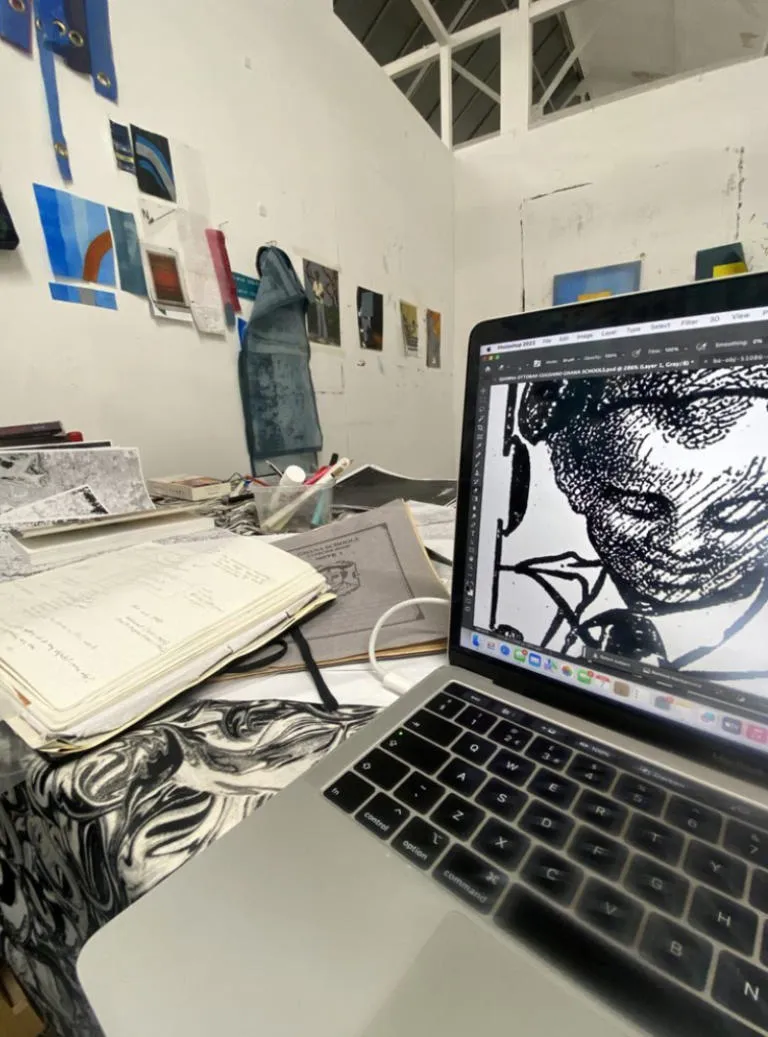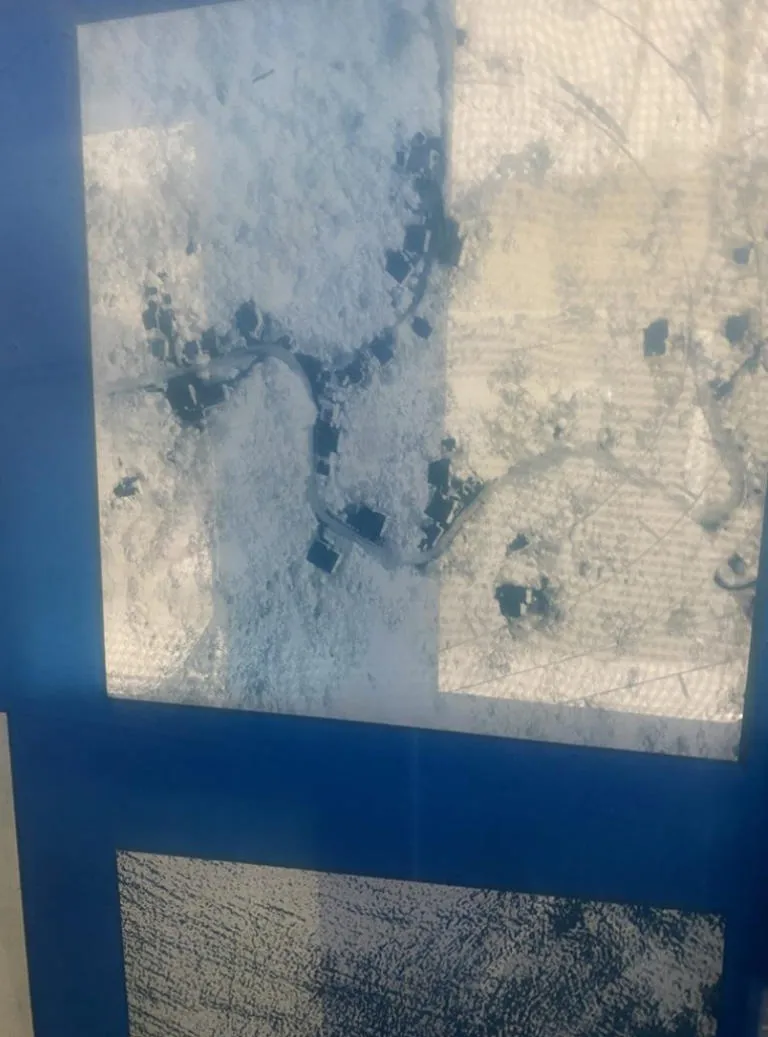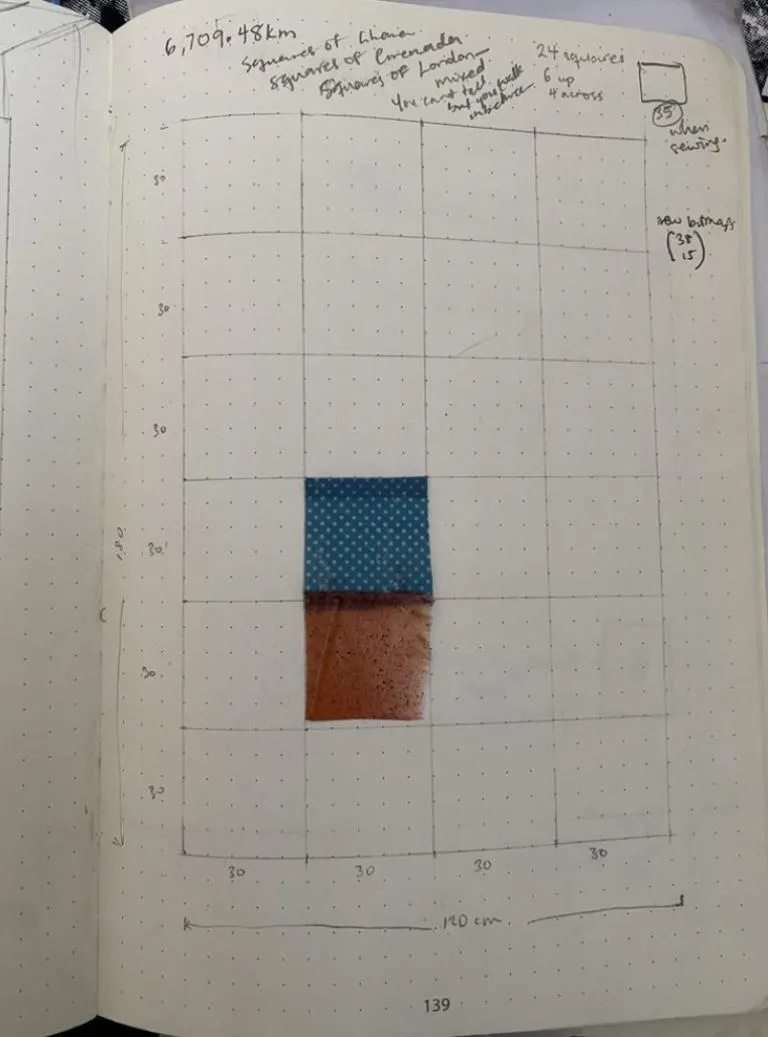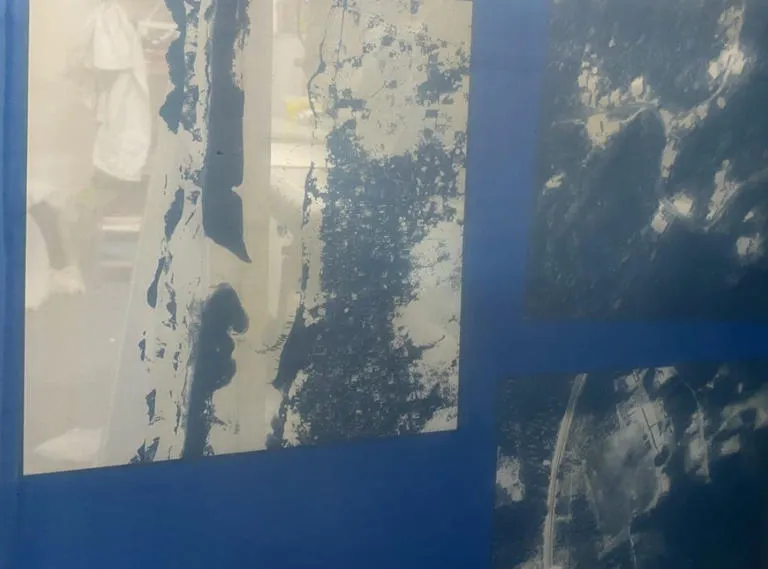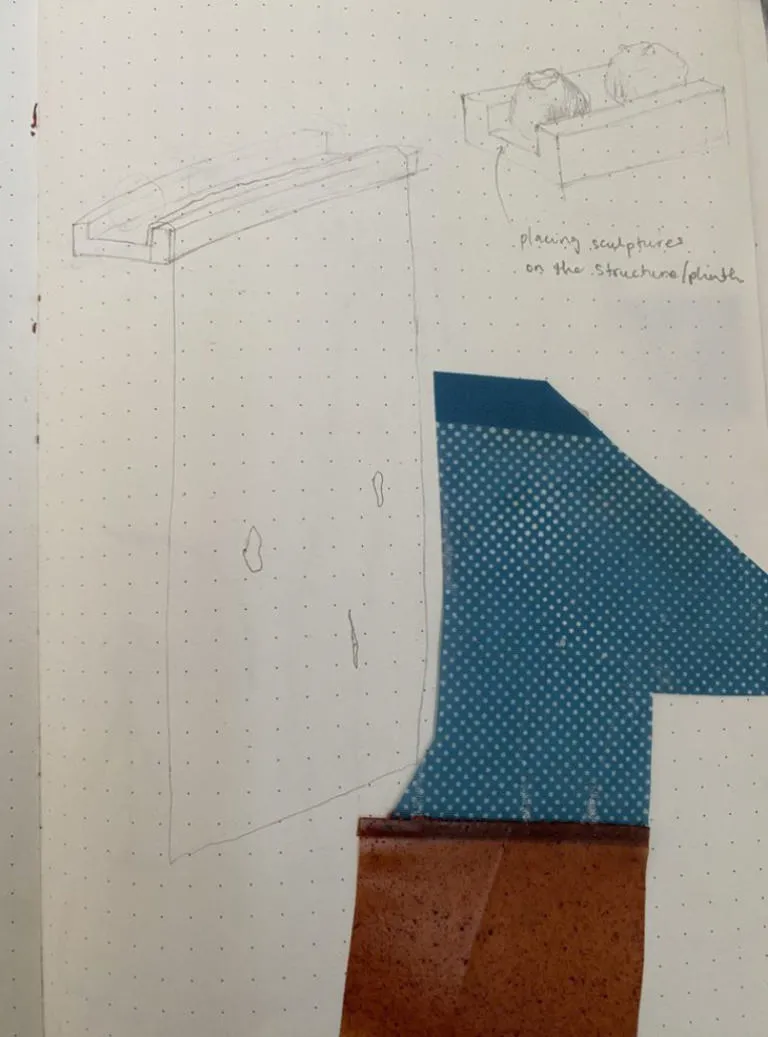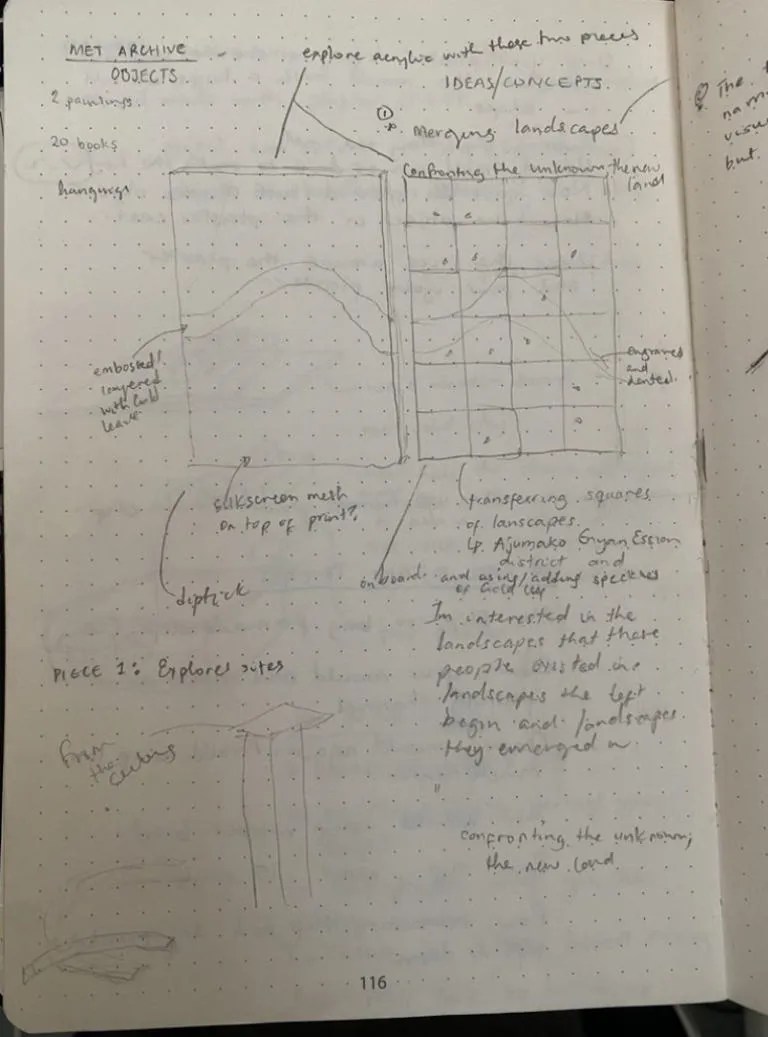Annie-Marie Akussah
Annie-Marie Akussah is a multidisciplinary artist, and educator who lives and works between Kumasi, Ghana and London, United Kingdom. She completed her Masters in Painting and Sculpture at KNUST (Kwame Nkrumah University of Science and Technology) in 2021 and her BFA in London at Wimbledon College of Art (University of the Arts London) in 2018.
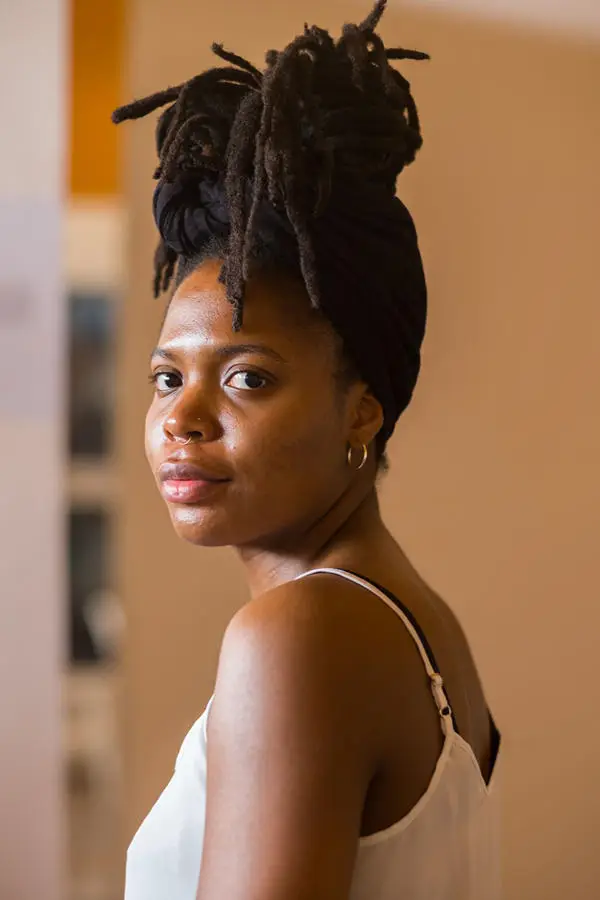
Artists Vision
Annie uses archival images of travel documents and latent materials to create paintings, sculptural objects, and films. She is interested in how entities negotiate to 'be/long' in familiar spaces. She adopts archival processes in her work, such as revealing, concealing, layering, fabricating, casting, and storing away.
There were three main discourses Annie wanted to explore for her response to the Unforgotten Lives exhibition:
- Confronting the unknown, the new land: landscape of Ajumayo-Enyan-Essian as well as the West and East India Docks
- Visually unrecognisable, yet sonically familiar: transformation of names like Quobna, Kobina, and Kwabena
- Presentation and transfiguration of archival objects: intervening and commenting on how archives are often presented and concealed
"“I am keen on creating new images that consider the site of uprooting and sites of manufacturing and their histories.”"
The Artwork
Confronting the unknown, the new land
Silkscreen and sorghum sheet

Confronting the unknown, the new land presents 42 squares of the landscapes that Quobna Ottobah Cugoano would have encountered like Ajumako-Enyan-Essian, the district in Ghana where he was born, the ports of Grenada where he was placed on a slave ship, as well as the West and East India Docks, which were built, in part, to trade in goods of enslaved labour from the Caribbean. It is an exploration of the uprooting of people and manufacturing of resources on both historical sites.
Confronting the unknown, the new land juxtaposes archival photographs, maps, satellite images, and drawings exposed on a screen. Through an assemblage of images that have been digitally manipulated using bitmap and different exposure times, you are invited to make discoveries and connections and get lost in the work. You are invited to spend time with the work, positioning yourself in a space that may be difficult to identify, as land, as sky, as water.
What gets lost in translation, deep deep deep in the belly of...
Silkscreen and Risograph print on paper

The composition is made up of a placement of books, proposing a new relic, and playing on the authority and veracity historical documents appear to possess in archival spaces. The only known image of Quobna Ottobah Cugoano is positioned on the cover of exercise books that ceased to be in production at the beginning of the 21st Century.
Cugoano's image is placed in a dominant and familiar place - as a way of re/storing. The template of the book is taken from a "Note 1" book in my family's archive which was used to gather the names of my family members at the beginning of my father's quest to document, gather, and trace our genealogy by way of creating a family tree. Inside the books are three kinds of drawings reproduced using risograph printing.
These drawings create a space for the absent. Repeated lines and gaps which are a familiar and recognisable to all, all who share in collective memory. What gets lost in translation, deep deep deep in the belly of... is a starting point for my exploration of the sonic deposit of knowledge materially through mark-making.
Annie-Marie in Conversation
My practice typically engages archives, whether private or public. After seeing the “Unforgotten Lives, Rediscovering Londoners of African, Caribbean, Asian and Indigenous Heritage” exhibition, I was particularly inspired by the multiple stories that I had encountered for the very first time. I became interested in Quobna Ottobah Cuguoano because his first name sounded familiar, like that given to a Tuesday born in the Akan tradition, but I had never heard of him, so I instantly wanted to enquire more, and this is the starting point for the work I will be working for the show.
In my experience, the archive is a body which is always becoming, with many more impressions to come in time. So, it means it is an active composite to generate his/herstories, to accumulate marks, and reveal many possibilities of entangled traces; and that can materialise in different ways; ways that are malleable.
I was drawn to all the stories in the Unforgotten Lives Exhibition; particularly Phillis Wheatley, Bishop Samuel Ajayi Crowther and Quobna Ottobah Cuguoano. All of whom played significant roles in writing about the experience of slavery, and advocating for the abolition of slavery. However, we know little of them because of an erasure that has happened, or because we don’t acknowledge them as often as we should.
An artistic response will add to the body of knowledge (archive) about the subject, in the form of a response. They perform a historical function.
Through search and research, an artistic response will bring into an encounter, knowledge that may not be recorded in typically western institutional methods. For example, Art can embed and use oral histories where documents are not present.
I am producing paintings that uses archival maps and images of landscapes that Quobna Ottobah Cuguoano would have encountered. I am also creating by means of inserting; a new relic for Quobna Ottobah Cuguoano
Some of the re/search material in the form of images and maps have been useful, but also the rarity of information about Quobna Ottobah Cuguoano has influenced the direction of the work.
As an artist, I’m not solely trying to illustrate archival documents, or historical happenings – I am in many ways intervening. This is why the idea for creating books where the audience can look through, has shifted slightly to creating books that almost function like a responding to a time that could have been, and now is, as a result of the book. My hopes are to make multiple of the book, but let’s see how it goes.
The team working on the project have been excited and supportive in many ways.
I am hoping that I can embed some site-specific elements into the space, because I am considering the historical context of the exhibition space as well. Site-specific elements like engaging the exit and entry signs with collages made of silk screen mesh.
The paintings are also made of silk screen mesh, which is very translucent and so it allows the work to be positioned dialectically in the space, implicating all bodies.
I am hoping that people will spend time with the works and open up to the dialogues the images may evoke. Because of the nature of the material, it can be difficult to identify some of the maps and images, but that is also an exciting part for me.
I am currently working towards a new body of work, so watch this space!
You can find me on Instagram @annieakussah
